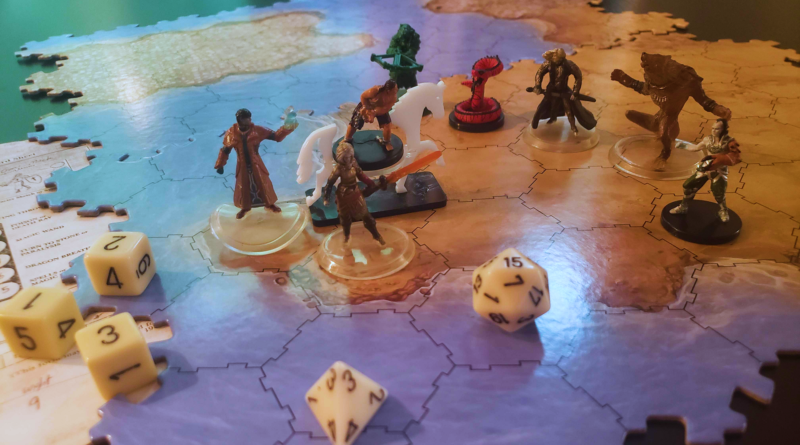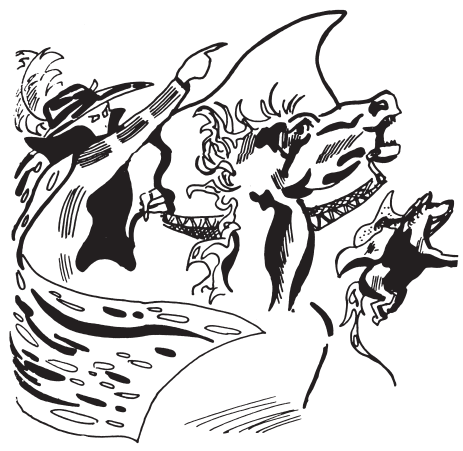Why You Should Try D&D 1st Edition
Dungeons & Dragons has come a long way from its early days. When OD&D first came out in 1974, it quickly caught fire and spread throughout the wargaming community. Almost five decades later, it’s still recognizably the game we love, but that doesn’t mean it hasn’t also massively evolved. My only goal with this article is to encourage you to seize any opportunity to experience the singular wildness of old-school D&D.
How? No idea, that’s probably the hardest part. I’ve only ever had one opportunity, and it was in 2011, while I was a professional Traveller GM for Strategicon. One of the other GMs decided to show the youngins’ what they were missing and hosted an OD&D campaign, and I got to play in all three sessions. And boy howdy was it wild.
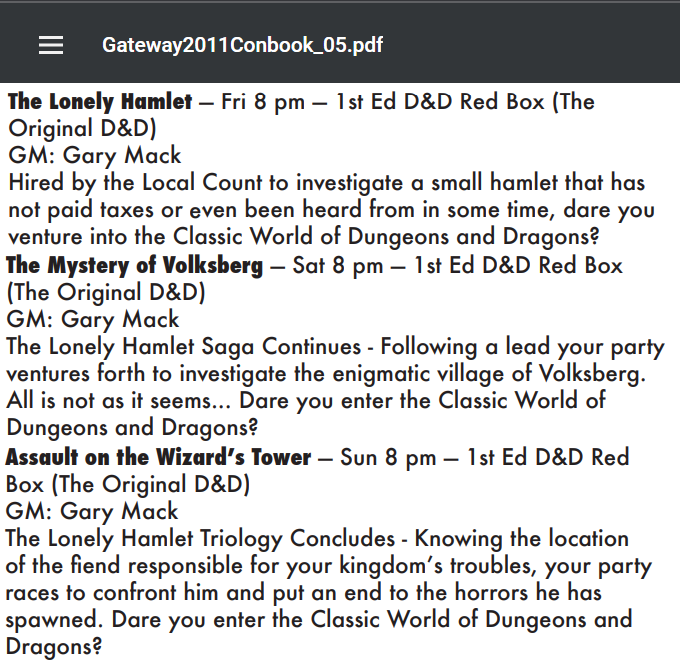
Between 3 and Infinity Playable Classes
The first thing you’ll probably notice if you scroll through the original rulebook is that there’s only three classes: Fighting Man (brawny martials), Magic-User (squishy spellcasters), and Cleric (bit of both, plus heals). Nonhuman races are limited in which classes they’re allowed to play; Elves can’t be clerics, and Dwarves or Hobbits (yes, hobbits) can only be Fighting Men.
However the rules also state openly that “There is no reason that players cannot be allowed to play as virtually anything, provided they begin relatively weak and work up to the top.” The listed example is dragon, starting as a youngling and getting progressively stronger like any other player character. Every single monster in the game is fair play if your DM (or “referee” as the books call them) is up for the challenge!
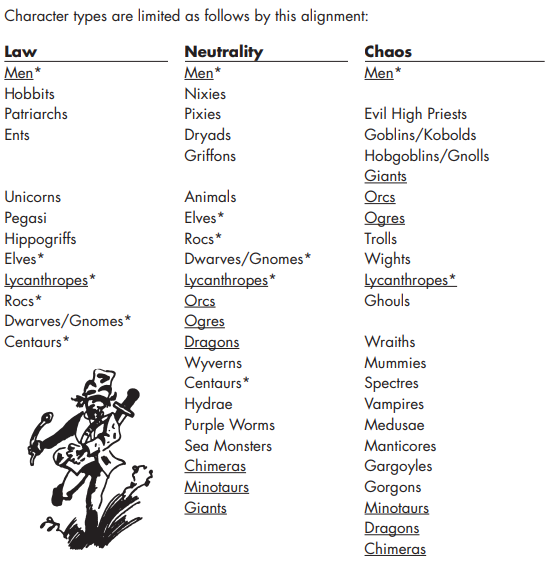
I also should note that there were tons of additional classes that came out in official supplements, unofficial supplements, fanzines, etc. It was basically the wild west era of the tabletop RPG genre, there were no hard and fast rules and everyone had their own spin to contribute. This enterprising forumite made a comprehensive list of the additional classes that appeared in Dragon magazine over those early 1e years. Just to give you a taste of how varied your heroes could be if you really sifted into the reeds.
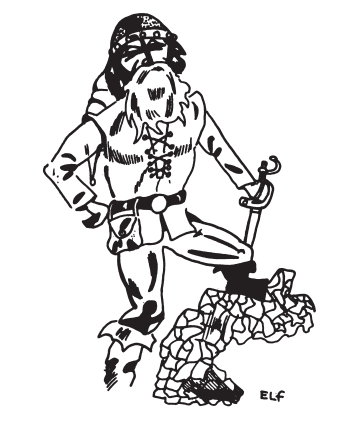
But we didn’t have access to any of that stuff, since we only had the OG books Gary brought to the convention table. Thus did we roll up our characters (stats are 3d6 in order! None of this “best of four drop 1, then allocate as desired” leniency. If you roll 5 Strength and were hoping to play a swordsman, tough luck) and I debuted St. Happening, the questionably-lawful crusader for a godly cause only he understood.
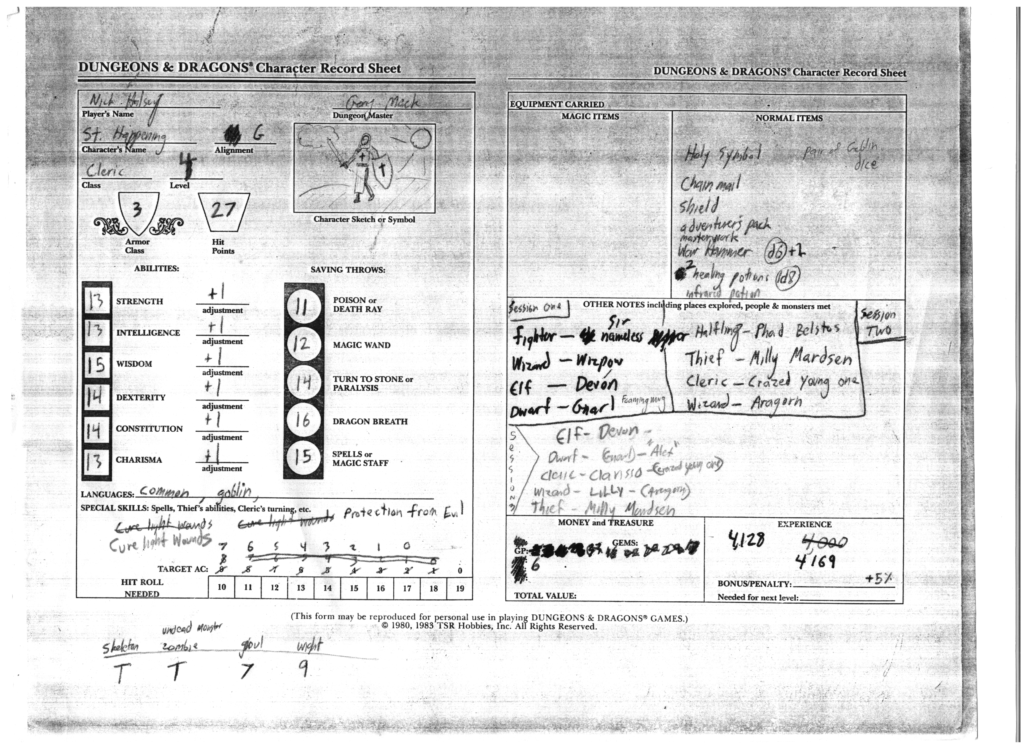
While nominally Good-aligned, our humble cleric seemed to be operating on a different definition than most people. He was regularly the one to suggest violent or sociopathic avenues for solving problems, and seemed to think hitting things with his holy symbol-branded-warhammer was “purifying” them for their own benefit. Luckily his saner teammates were able to mostly keep him in line.
The Joys of THAC0
If and when you ever get the chance to play early D&D, you may experience the brain-melting mechanic that is THAC0. While its reputation is somewhat blown out of proportion for comedic effect, “To Hit Armor Class Zero” still a very different beast from how combat works nowadays. And you’ll have to do it every time you swing a sword at something!

Now we didn’t have THAC0 in OG 1st edition, instead we got a jumble of tables for figuring out what can and can’t hit each other. But Gary let us play a few combats with AD&D THAC0 just to experience it, and it’s like nothing we’ve got in modern D&D. It was an attempt to simplify the combat rules into a single pithy equation, and it technically worked. Yet 3e heard the complaints and flipped ACs to the “bigger is better” system that still largely exists today. But if you ever want to experience having negative AC, THAC0 is your best bet!
Stingy Spells
Most people think of spellcasters as either “blasters” or “ranged damage specialists.” And this is true…at higher levels. But early-campaign Magic-Users are probably the weakest tagalongs of any edition. With no armor and pitiful HP (possibly even a single hitpoint), they can die at any time to anything. And they don’t even get any damage-dealing spells till 3rd level! Plus their only allowed weapon is the dagger, which in this edition is not a throwing weapon. Gary let ours do it anyway, but the Magic-Users were still largely useless for the first four levels our campaign covered. (One of them tried to charm person a goblin to become their combat minion, which I thought was a clever idea, but it passed the save.)
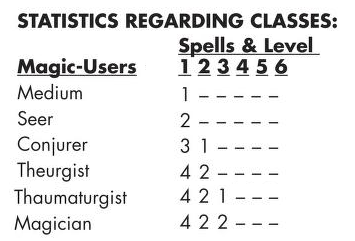
No Opportunity Attacks
Don’t even stress about sprinting through the enemy hordes. There are no such things as reactions! During the first session I always sent St. Happening to fight the least-convenient foe just so I could weave through all the others and revel in the lack of penalty. It also came in handy when most of us died in the final fight within the orc warcamp, as I could run away freely to quest another day… With a fresh group of attendees next session.
No Skills
That long list of skills you’re familiar with didn’t exist yet. Even straight ability checks with the six core attributes was only a house rule at this time, non-weapon proficiencies wouldn’t appear until AD&D supplemental books. Charisma’s only job was to determine how many NPC mercenaries you can hire. In general, everything that isn’t combat-related gets comparatively little coverage in the core rules. And even then, a lot of the more niche spells are largely left up to the referee to determine what it exactly means when (for example) charm person causes the victim to “come completely under the caster’s influence” permanently till dispelled.
You Can Lose Levels
Numerous enemies (like Spectres, Vampires, and Giant Leeches) don’t attack your health directly; instead, they delete “life energy” equal to a reduction of 1-2 levels. Usually these are on hit, with no saving throw. And as the game cheerfully notes, “energy levels can only be regained by fresh experience.” Gary decided to be cheeky and sic Wights on us at the end of the second session, and once again Saint Happening bravely abandoned his team to their gruesome ends. Will his luck never run out?
Alignment Languages
There were special languages (Chaos, Law, and Neutrality) that anybody of the proper alignment spoke. Behaving essentially like ideology-driven thieves’ cant, everyone sharing an alignment had a bizarre method by which they could secretly communicate with those like them. It’s a very peculiar premise, I have no clue what element of medieval fantasy mythology this was trying to emulate, and we found very few opportunities to use it. But it’s one of those weird mechanics that really drives home how far from modern D&D we are.
Downtime Was in Real Time
Early D&D was considered less of a “story with your friends” and more of a living, breathing alternate world that existed even when you weren’t playing. Between sessions, time still passed in the D&D world at a 1:1 rate to real life. This means that if your group meets every week, at the end of each session you had to tell the GM what your character was doing for the 7 days in between. You also couldn’t break ‘mid-adventure’ unless you were prepared to camp in the dungeon/wilderness and risk monsters killing your party while you were away. This quirky concept didn’t have a huge impact on Gary’s short campaign since it was mostly new player characters each session, but St. Happening did have to spend his downtime receiving magical healing from the local temple so he’d be fit enough to continue. (Natural recovery heals only a single point per day!)
Magic Weapons Have Ego
Magic Weapons are treated like semi-sentient beings. They have alignments, and picking one up with a conflicting alignment will physically damage you. If it vastly outlevels you, it may take control of your character rather than the other way around. The referee also needs to calculate its “Egoism”, which shows how highly the weapon thinks of itself. High-ego weapons may lead its user past better weapons, lure its user into danger for more glory, or even demand a portion of treasure be spent upgrading its scabbard or ornamentation. Luckily when St. Happening looted a +1 Warhammer, it had extremely low intelligence and fell for any lame excuse he gave for his questionable choices.
XP is Tied Directly to Treasure
As you undergo adventures, the gold & valuables you find contribute to XP. Loot is straight-up on equal footing with monsters as the primary mechanic for leveling up; coins, gems, and jewelry all had exchange rates so you could calculate how much more powerful you got after every dungeon crawl. In my second session, the party thief didn’t tell anyone about a hidden chest they found, meaning they earned a hefty chunk of experience nobody else did.
But when the players of my third session realized the logical implications, our collective greed ultimately proved to be our undoing. Scarcely had the final fight against the dragon finished that we descended murderously upon each other, hoping to keep its entire hoard for ourself. St. Happening was ultimately slain by his own elven ally in the backstabbing melee, honestly a fitting end for his sordid adventuring career. (Said elf ended up winning the battle royale, and instantly leveled like four times in a row.)
Overall, 1st edition D&D was a very odd beast, and it was fascinating to see how the system worked back when it was first starting out. There were so many familiar elements, yet nothing was pieced together in quite the way I’d grown used to. Much like I enjoyed playing EverQuest to learn more about WoW, I highly encourage any modern D&D fans to try the original system and experience its janky math-riddled glory for themselves.
